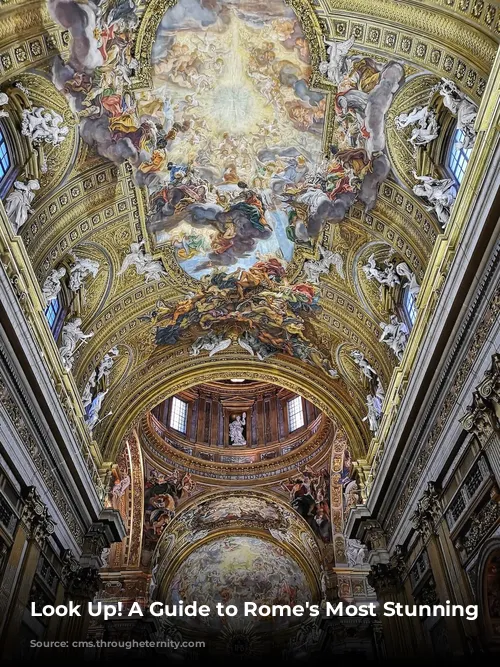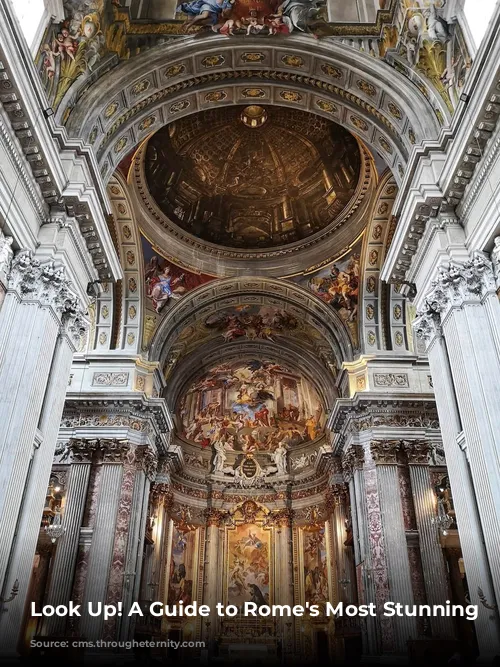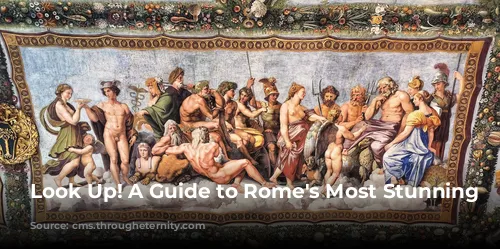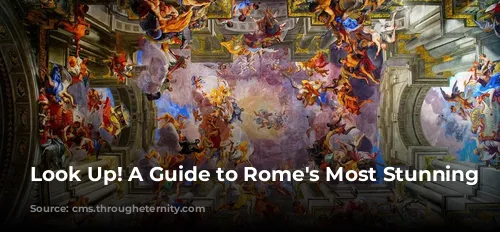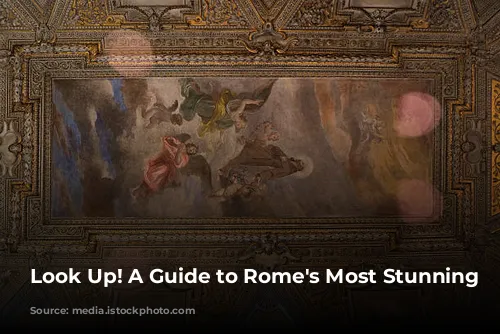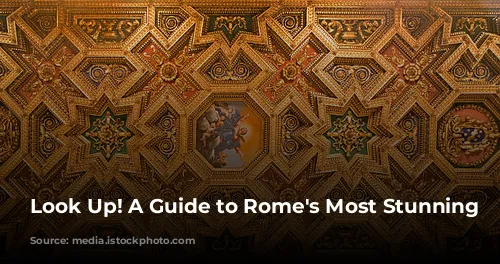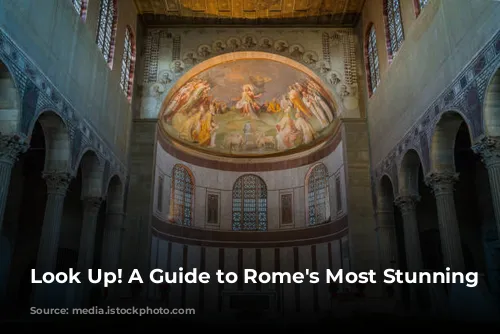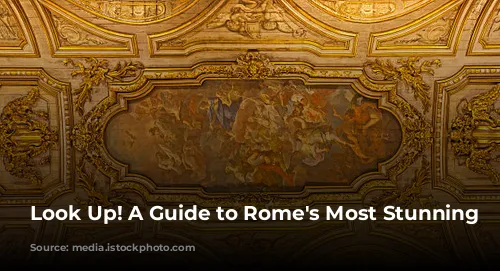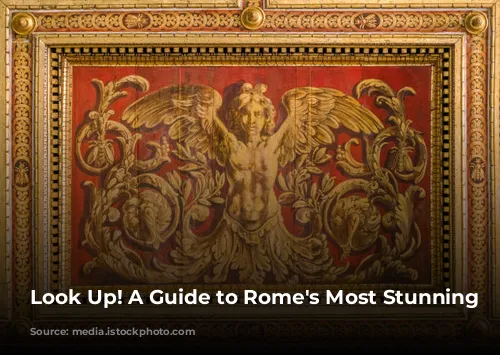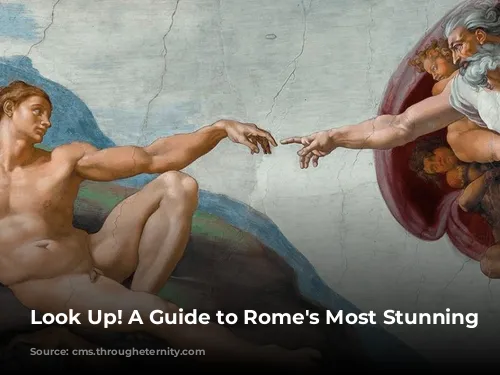Imagine walking through Rome, surrounded by ancient history and breathtaking architecture. But what if you could also look up and be amazed by a whole other world painted right above your head? Rome is famous for its beautiful churches and palaces, and many of them boast incredible painted ceilings, each a masterpiece in its own right. These ceilings are so impressive that your neck will be begging for a massage after your visit! We’re about to embark on a journey to explore some of the most magnificent ceiling decorations in Rome, a treat for any art lover.
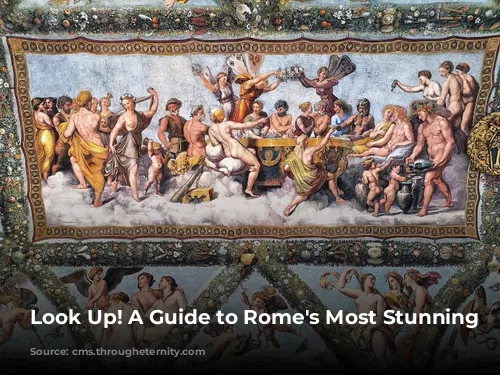
Michelangelo’s Sistine Chapel: A Masterpiece of the Renaissance
Any discussion of ceiling paintings in Rome must start with the most famous one: Michelangelo’s Sistine Chapel. This masterpiece is a testament to his incredible talent. The sheer scale of the artwork is awe-inspiring, with over 300 monumental figures painted across the ceiling, including prophets, seers, and even naked figures known as “ignudi.” Michelangelo’s powerful depiction of the Old Testament Book of Genesis tells the story of creation and the fall of humanity, each scene as captivating as the last.
The most iconic scene of all is God giving life to Adam. The touch of their index fingers is a moment frozen in time, capturing the power of creation. Other scenes showcase God’s work in crafting the world: separating light from darkness, dividing water from land, and even creating the sun, moon, and planets. But it’s not all sunshine and rainbows. The scene of Adam and Eve’s temptation and expulsion from the Garden of Eden reminds us of humanity’s fallibility. Michelangelo’s depiction of the Flood, with its raging waters and overwhelming power, is a stark reminder of God’s wrath.
The Sistine Chapel is a must-see for any visitor to Rome. Michelangelo’s incredible work took four years to complete, and when it was unveiled, the world was stunned. Michelangelo’s masterpiece changed the course of art history forever. You can experience the Sistine Chapel for yourself on an expert-led tour of the Vatican Museums.
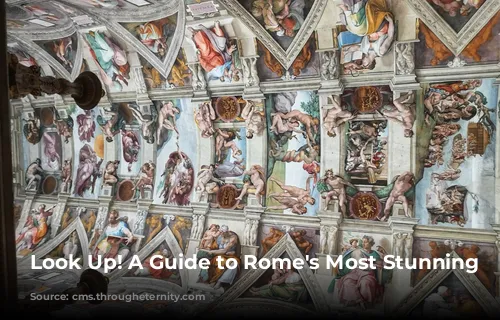
Raphael’s Villa Farnesina: A Celebration of Love and Beauty
Now let’s shift our gaze from the Vatican to a different kind of masterpiece: Raphael’s Villa Farnesina. This lavish villa was commissioned by the wealthy businessman Agostino Chigi, who wanted to showcase his love for his younger bride Francesca Ordeaschi. He hired the greatest artist of his time, Raphael, to adorn the villa’s open-air loggia with frescoes depicting the story of Cupid and Psyche. This passionate love story, filled with challenges and betrayals, was perfect for celebrating Chigi and Francesca’s love.
The frescoes in the loggia are a visual feast, with scenes of Cupid and Psyche’s romance intertwined with Venus’s jealous punishments. The ceiling features a grand wedding banquet of the gods on Mount Olympus, a celebration of love and beauty. The intricate borders of painted vegetation add to the theme of fertility, a fitting tribute to Chigi and Francesca’s upcoming marriage. Raphael’s Villa Farnesina is a testament to the beauty and creativity of the Renaissance, and you can experience it on a guided tour designed to immerse you in its splendor.

Palazzo Barberini: A Baroque Masterpiece
Stepping into the 17th century, we arrive at the Palazzo Barberini, a grand palace built for one of Rome’s most powerful families, the Barberinis. The palace’s design was a collaborative effort of some of the greatest architects of the time, including Carlo Maderno, Gianlorenzo Bernini, and Francesco Borromini. But the most striking element of the palace is the Great Hall’s ceiling, painted by Pietro da Cortona.
The ceiling is a breathtaking masterpiece of Baroque art. Da Cortona’s incredible use of perspective creates the illusion that the ceiling is opening up to the heavens, with bees, the Barberini family symbol, soaring towards divine immortality. The scene is presided over by Divine Providence, showcasing the family’s favored status with God. This artistic technique, known as quadratura, blurs the lines between reality and imagination, creating an illusion that is both awe-inspiring and captivating. The Barberini ceiling is a testament to the power of Baroque art, leaving you breathless with its grandeur and beauty.

The Gesù: A Heavenly Triumph
Moving on to the world of churches, we find The Gesù, the mother church of the Jesuit order. This opulent church is filled with treasures, but the real showstopper is the ceiling, painted by Giovanni Battista Gaulli, known as Il Baciccio. Il Baciccio’s fresco covers the entire length of the ceiling and cupola, creating a scene that transports you to the heavens.
The fresco depicts the Triumph of the Name of Jesus, a fitting subject for the Jesuit church. The ceiling seems to vanish into a swirling mass of clouds, opening up a view of the celestial sphere. At the center, the monogram of Christ’s name is bathed in light, surrounded by angels and holy figures. Rebel angels, falling from the ceiling in tortured poses, are defeated by the mere mention of Christ’s name. The Gesù is a masterpiece of Baroque art, where painting, sculpture, and architecture combine to create a multi-sensory experience. Il Baciccio’s fresco makes The Gesù one of the most important pilgrimage destinations in 17th-century Rome.
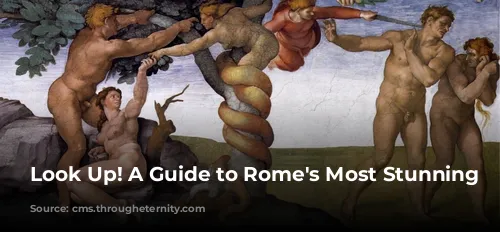
Sant’ Ignazio: A Fake Dome Masterpiece
The Jesuits, known for their power and wealth, decided to build another church to honor their founder, Ignatius of Loyola. However, they ran out of money before they could finish the dome. Enter the painter-priest Andrea Pozzo, an expert in mathematics and a gifted artist. Pozzo was tasked with creating a fake dome on the church’s flat ceiling.
Pozzo’s illusionistic masterpiece is so convincing that it’s only when you’re standing directly beneath it that the fake dome is revealed. The ceiling is completely dematerialized, opening up to a sunny blue sky where Ignatius himself is being borne towards heaven. The surrounding continents watch the scene, showcasing the Jesuit mission to spread Catholicism across the globe. Sant’ Ignazio is another example of the incredible artistry of the Baroque period, showcasing the power of illusion and the mastery of technique.
From the grand ceilings of the Vatican to the intricate frescoes of the Villa Farnesina, Rome offers a feast for the eyes. So, the next time you visit the Eternal City, look up and discover the hidden world above. These painted ceilings are a testament to the talent and creativity of the greatest artists in history, offering a glimpse into the heart and soul of Rome.
